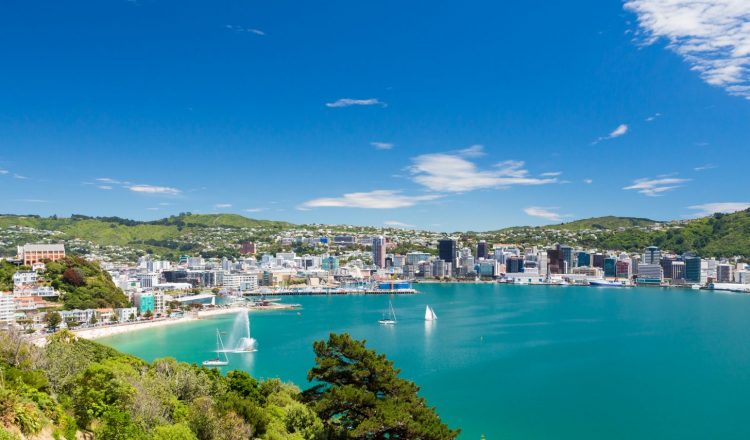Cuộc sống tốt hơn
Có nhiều cuộc sống hơn những con số lạnh của GDP và thống kê kinh tế — Chỉ số cuộc sống tốt hơn của OECD cho phép bạn so sánh hạnh phúc trên khắp các quốc gia, dựa trên 11 chủ đề mà OECD đã xác định là thiết yếu, trong các lĩnh vực của điều kiện sống vật chất và chất lượng cuộc sống.
New Zealand hoạt động tốt trong nhiều biện pháp phúc lợi tương đối so với hầu hết các quốc gia khác trong Chỉ số cuộc sống tốt hơn. New Zealand đứng trên mức trung bình về tình trạng sức khỏe, thu nhập và sự giàu có, chất lượng môi trường, an ninh cá nhân, tham gia công dân, nhà ở, phúc lợi chủ quan, giáo dục và kỹ năng, việc làm và thu nhập, và các kết nối xã hội nhưng dưới mức trung bình trong cân bằng lao động và cuộc sống. Các bảng xếp hạng này dựa trên dữ liệu được lựa chọn sẵn có.
Tiền, trong khi nó không thể mua được hạnh phúc, là một phương tiện quan trọng để đạt được mức sống cao hơn. Tại New Zealand, thu nhập dùng một lần được điều chỉnh bằng mạng hộ gia đình trung bình thấp hơn mức trung bình của OECD là 33 604 USD một năm.
Về việc làm, 77% người từ 15 đến 64 tuổi ở New Zealand có việc làm được trả lương, cao hơn mức trung bình việc làm của OECD là 68%. Một số 82% nam giới đang làm việc có lương, so với 72% nữ giới. Tại New Zealand, 15% nhân viên làm việc giờ rất dài, nhiều hơn mức trung bình của OECD là 11%, với 21% nam làm việc giờ rất dài so với 9% nữ giới.
Giáo dục tốt và kỹ năng là những điều cần thiết quan trọng để tìm việc làm. Tại New Zealand, 79% người lớn từ 25-64 đã hoàn thành giáo dục phổ thông, cao hơn mức trung bình của OECD là 78%. Điều này hơi chân thật của phụ nữ hơn nam giới, vì 78% nam giới đã hoàn thành thành công trung học so với 79% nữ giới. Về chất lượng của hệ thống giáo dục, trung bình học sinh đạt 506 trong việc đọc biết viết, toán học và khoa học trong Chương trình đánh giá sinh viên quốc tế của OECD (PISA). Điểm số này cao hơn mức trung bình của OECD là 486. Trung bình ở New Zealand, các bé gái đã vượt trội hơn các bé trai 6 điểm, rộng hơn khoảng cách trung bình của OECD là 2 điểm.
Về sức khỏe, tuổi thọ bình quân khi sinh ở New Zealand là 82 năm, cao hơn hai năm so với trung bình của OECD là 80 năm. Tuổi thọ bình quân của phụ nữ là 83 năm, so với 80 đối với nam giới. Mức PM2.5 trong khí quyển — các hạt gây ô nhiễm không khí nhỏ đủ nhỏ để xâm nhập và gây tổn thương phổi — là 4,9 microgram trên mét khối, thấp hơn đáng kể so với mức trung bình của OECD là 13,9 microgram trên mét khối. New Zealand cũng làm tốt về chất lượng nước, vì 89% người dân nói rằng họ hài lòng với chất lượng nước của họ, cao hơn mức trung bình của OECD là 81%.
Liên quan đến lĩnh vực công cộng, có một ý thức mạnh mẽ về cộng đồng và mức độ tham gia công dân cao ở New Zealand, nơi 96% người tin rằng họ biết ai đó mà họ có thể dựa vào trong thời điểm cần thiết, nhiều hơn mức trung bình của OECD là 89. Cử tri đi bầu, một thước đo sự tham gia của công dân trong quá trình chính trị, là 80% trong các cuộc bầu cử gần đây, cao hơn mức trung bình của OECD là 68%. Cử tri đi bầu cho 20% dân số hàng đầu là ước tính 97%, trong khi tỷ lệ tham gia của 20% dưới cùng là ước tính 85%. Sự khác biệt này hơi hẹp hơn so với sự khác biệt trung bình của OECD là 13 điểm phần trăm.
Nhìn chung, người New Zealand hài lòng hơn với cuộc sống của họ so với mức trung bình của OECD. Khi được yêu cầu đánh giá sự hài lòng chung của họ với cuộc sống trên thang điểm từ 0 đến 10, người New Zealand đã cho nó điểm trung bình 7,3, cao hơn mức trung bình của OECD là 6,5.
Để biết thêm về Chỉ số cuộc sống tốt hơn của New Zealand (liên kết bên ngoài)

















































